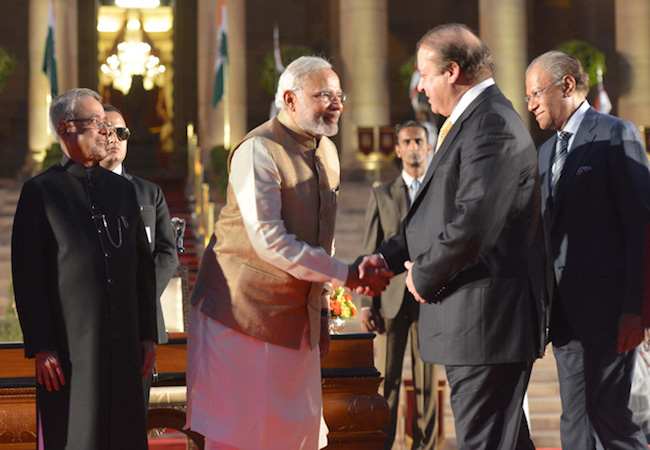
By Maimuna Ashraf
The current tensions between India and Pakistan can be easily traced back to the election of Prime Minister Narendra Modi’s government and now accentuated after the Uri episode; an attack by the militants on the Indian military forces. The issue has become more complicated but knowing Prime Minister Modi and the kind of composition of his government, this kind of situation or deterioration between India and Pakistan could not have been ruled out. It has been in fact the part of fluctuations that have taken place between India and Pakistan since independence. The South Asian history is interspersed with wars, conflict, crisis and disruption of diplomatic relations and dialogues between the two states, therefore the prevailing tension was quite expected. It is not a cozy situation. There is a kind of conflict growing up which if escalates, either intentionally or inadvertently, will make the situation all the more dangerous, since both India and Pakistan are nuclear weapon states. It needs to be addressed and handled with utmost care. Not just for the sake of peace and stability of both countries but also because the ramification might go beyond the South Asian region.
Regarding the Uri event, India has internationalized this event. This highlights two Indian objectives, first, to malign Pakistan in the world alleging that terrorist attack at Uri was done by Pakistan. Second, India is now trying to make a political capital of local situation and trying to project Pakistan as terrorist state which is also a general objective of Modi’s government. India tried its best to isolate Pakistan and wanted it to be declared a terrorist state at BRICS Summit but failed miserably. China stood with Pakistan and rejected Indian claims. China’s stance was correct as Pakistan remains the worst victim of terrorism despite playing a vital role in suppressing terrorism.
These escalatory trends present a dangerous situation that has the potential to spiral into a limited conventional conflict or may even inadvertently lead to a nuclear catastrophe. Without a doubt Pakistan’s nuclear weapons have maintained deterrence against India. Both the countries know that any misadventure would lead to Mutual Assured Destruction (MAD). Conventionally, Pakistan is still behind India; however, nuclear weapons have covered that gap to some extent. Pakistan has kept its nuclear doctrine ambiguous so that the element of surprise could be utilized. India introduced Cold-Start Doctrine in order to launch limited war against Pakistan for achieving certain specific objectives. Pakistan in response developed Tactical Nuclear Weapons (TNWs), battlefield nuclear weapons for countering such specific strikes from the Indian side.
The most important factor that will determine the deterrence equilibrium in South Asia is the induction of new nuclear weapon system in South Asia which includes INS Arihant, submarine launched ballistic missiles and acquisition of ballistic missile defense. Pakistan is not unaware of the potential of such kind of deployments and Pakistan is also not unaware of the kind of strategic weapon system based on nuclear warheads which India is developing while Pakistan is not lagging behind in maintaining its national security based on adequate national defense and nuclear weapons capability. Pakistan’s maintenance and advancement of minimum credible deterrence at the moment is well recognized internationally which discourages India to launch a war against Pakistan. After having the full spectrum deterrence, Pakistan now has the capability to cover all kinds of threats. India has very aggressive strategic posture; it is aiming at the nuclearization of Indian Ocean and projecting military power in the Persian Gulf and the Arabian Sea. Both these water bodies have traditionally been recognized as very important waters for Pakistan’s national security and should remain a concern for Pakistani military decision makers.
Both Pakistan and India have not signed NPT and there seems less possibility for regional cooperation in the nuclear field, which is a worrisome issue. However, whenever the nuclear factor came into play it did not allow the situation to escalate into a full-fledged war. It is the space for limited war only which keeps putting deterrence stability a bit under stress. Thus the two states need to understand that the dominant thought in deterrence debate is that no nuclear power would be able to control the pace of escalation by threatening another with massive retaliation – and also hoping that it would deter a response.




